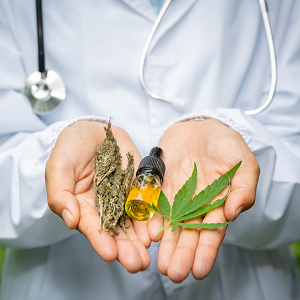Impact of Cannabis Legalization on Workplace Culture, Work Disability, and Productivity
 By Dr. Tyler Amell, PhD
By Dr. Tyler Amell, PhD
Chief Medical and Relationship Officer
CoreHealth Technologies
Cannabis legalization is already affecting your workplace culture and productivity, but its impact involves many uncertain factors. It’s important to review key trends to estimate the major impacts that are beginning to arrive.
Recreational cannabis is legal in 11 states and Washington D.C., and there are efforts to legalize in five more states in 2020.1 The greatest impact is felt by multi-state employers, as well as employers with employees in both the United States and Canada, where cannabis (marijuana) was fully legalized in 2018.
Currently 130 million North Americans can access recreational cannabis legally, or 36% of the combined U.S. and Canadian population. Additionally, 33 U.S. states and Washington D.C. have legalized cannabis for medicinal purposes. Nearly all states permit the use of low-dose, non-intoxicating cannabidiol (CBD) oil, which has some medicinal application. Yet cannabis remains illegal under U.S. federal laws. This complex legal landscape has employers trying to comply with state cannabis laws, “zero tolerance” policies based on federal law, and protections for recreational users adopted by Arizona, Maine, Massachusetts, and potentially other states.
Cannabis is the second most popular psychotropic drug after alcohol. Approximately 55 million U.S. adults have used cannabis in the last year, while 35 million use it once or twice per month.2 The majority of cannabis users are Millennials who currently make up 50% of the workforce, and will peak at 75% in the next few years.
Many employers are already wondering how to insulate the workplace from potential safety issues related to functional impairment from cannabis use. One recent study reported that 13% of current cannabis users consumed before or during work hours. Among daily or almost-daily consumers over the age of 15, 27% reported using before or while at work in the past three months.3
To understand the impact of cannabis at work, you need to know about its constituent chemicals and their effect, including CBD and THC (Tetrahydrocannabinol), as well its influence on employee culture, productivity, effectiveness at work, testing, and driving. Do users report to work impaired, and if so, how can we know?
Recreational vs. Medicinal Usage and Culture
The cannabis plant itself has over 100 different component chemicals. The two most biologically active components, CBD and THC, have dramatically different effects. Both compounds interact with the body’s endocannabinoid system, which is part of the nervous system. They influence pain, memory, mood, appetite, stress, sleep, metabolism, immunity, and reproductive function in various ways. All of these potentially have an impact on health and productivity at work.
Cannabis has been used for decades in various synthesized forms to help cancer patients offset the side effects of chemotherapy, including nausea and vomiting, as well as treating chronic pain.4 CBD lacks intoxicating effects, and is used for medicinal purposes for anti-inflammatory, anti-seizure, and anti-nausea effects.
Full content is available to DMEC members only. to view the complete resource.
If you are not a DMEC member, we encourage you to join. DMEC members have access to white papers, case studies, @Work magazine articles, free webinars, legislative updates, and much more. These resources will assist you in building an effective and compliant integrated absence management program, saving you time, resources, and money. Learn more.
If you are being asked to log in more than once, please refresh your browser.



